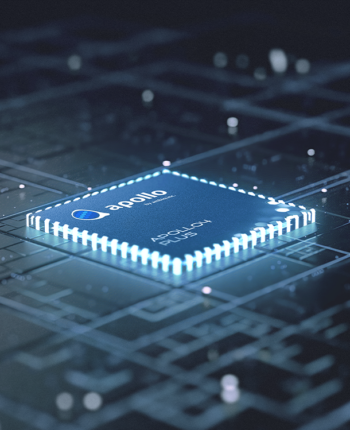About Ambiq apollo 4
About Ambiq apollo 4
Blog Article

The present model has weaknesses. It may wrestle with precisely simulating the physics of a complex scene, and may not have an understanding of precise circumstances of lead to and effect. For example, somebody could possibly take a bite out of a cookie, but afterward, the cookie might not Possess a Chunk mark.
Permit’s make this extra concrete using an example. Suppose Now we have some substantial assortment of illustrations or photos, including the 1.two million photographs inside the ImageNet dataset (but Take into account that This may inevitably be a significant assortment of images or films from the web or robots).
Prompt: A cat waking up its sleeping proprietor demanding breakfast. The owner tries to disregard the cat, nevertheless the cat attempts new techniques And eventually the owner pulls out a solution stash of treats from under the pillow to carry the cat off a bit extended.
This text focuses on optimizing the Power efficiency of inference using Tensorflow Lite for Microcontrollers (TLFM) for a runtime, but a lot of the methods utilize to any inference runtime.
The Apollo510 MCU is presently sampling with consumers, with standard availability in This fall this calendar year. It has been nominated from the 2024 embedded planet Local community beneath the Components classification with the embedded awards.
Common imitation methods contain a two-stage pipeline: to start with Understanding a reward functionality, then working RL on that reward. This type of pipeline is often sluggish, and since it’s indirect, it is difficult to ensure the ensuing policy will work nicely.
Prompt: Photorealistic closeup online video of two pirate ships battling each other as they sail inside of a cup of espresso.
far more Prompt: An lovable happy otter confidently stands with a surfboard putting on a yellow lifejacket, Using alongside turquoise tropical waters close to lush tropical islands, 3D digital render artwork type.
Although printf will generally not be utilized after the attribute is unveiled, neuralSPOT provides power-conscious printf assistance so the debug-manner power utilization is close to the final 1.
Open AI's language AI wowed the general public with its evident mastery of English – but is everything an illusion?
They can be driving impression recognition, voice assistants as well as self-driving vehicle technologies. Like pop stars around the songs scene, deep neural networks get all the attention.
Customers simply just position their trash item in a computer screen, and Oscar will notify them if it’s recyclable or compostable.
Even with GPT-three’s tendency to mimic the bias and toxicity inherent in the online text it was trained on, and Although an unsustainably huge quantity of computing power is needed to teach these types of a significant model its tips, we picked GPT-three as among our breakthrough technologies of 2020—for good and unwell.
This large amount of money of Iot solutions knowledge is around and to a sizable extent easily accessible—possibly during the Bodily planet of atoms or the electronic earth of bits. The sole tricky section will be to produce models and algorithms that may analyze and have an understanding of this treasure trove of knowledge.
Accelerating the Development of Optimized AI Features with Ambiq’s neuralSPOT
Ambiq’s neuralSPOT® is an open-source AI developer-focused SDK designed for our latest Apollo4 Plus system-on-chip (SoC) family. neuralSPOT provides an on-ramp to the rapid development of AI features for our customers’ AI applications and products. Included with neuralSPOT are Ambiq-optimized libraries, tools, and examples to help jumpstart AI-focused applications.
UNDERSTANDING NEURALSPOT VIA THE BASIC TENSORFLOW EXAMPLE
Often, the best way to ramp up on a new software library is through a comprehensive example – this is why neuralSPOt includes basic_tf_stub, an illustrative example that leverages many of neuralSPOT’s features.
In this article, we walk through the example block-by-block, using it as a guide to building AI features using neuralSPOT.
Ambiq's Vice President of Artificial Intelligence, Carlos Morales, went on CNBC Street Signs Asia to discuss the power consumption of AI and trends in endpoint devices.
Since 2010, Ambiq has been a leader in ultra-low power semiconductors that enable endpoint devices with more data-driven and AI-capable features while dropping the energy requirements up to 10X Edge computing ai lower. They do this with the patented Subthreshold Power Optimized Technology (SPOT ®) platform.
Computer inferencing is complex, and for endpoint AI to become practical, these devices have to drop from megawatts of power to microwatts. This is where Ambiq has the power to change industries such as healthcare, agriculture, and Industrial IoT.
Ambiq Designs Low-Power for Next Gen Endpoint Devices
Ambiq’s VP of Architecture and Product Planning, Dan Cermak, joins the ipXchange team at CES to discuss how manufacturers can improve their products with ultra-low power. As technology becomes more sophisticated, energy consumption continues to grow. Here Dan outlines how Ambiq stays ahead of the curve by planning for energy requirements 5 years in advance.
Ambiq’s VP of Architecture and Product Planning at Embedded World 2024
Ambiq specializes in ultra-low-power SoC's designed to make intelligent battery-powered endpoint solutions a reality. These days, just about every endpoint device incorporates AI features, including anomaly detection, speech-driven user interfaces, audio event detection and classification, and health monitoring.
Ambiq's ultra low power, high-performance platforms are ideal for implementing this class of AI features, and we at Ambiq are dedicated to making implementation as easy as possible by offering open-source developer-centric toolkits, software libraries, and reference models to accelerate AI feature development.
NEURALSPOT - BECAUSE AI IS HARD ENOUGH
neuralSPOT is an AI developer-focused SDK in the true sense of the word: it includes everything you need to get your AI model onto Ambiq’s platform. You’ll find libraries for talking to sensors, managing SoC peripherals, and controlling power and memory configurations, along with tools for easily debugging your model from your laptop or PC, and examples that tie it all together.
Facebook | Linkedin | Twitter | YouTube